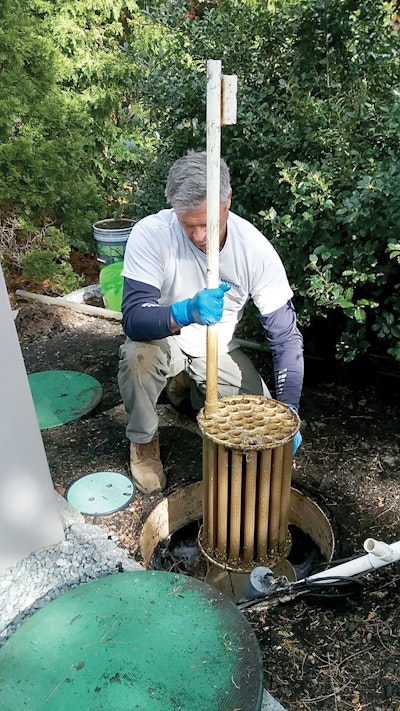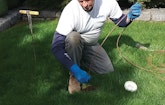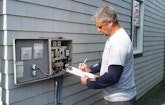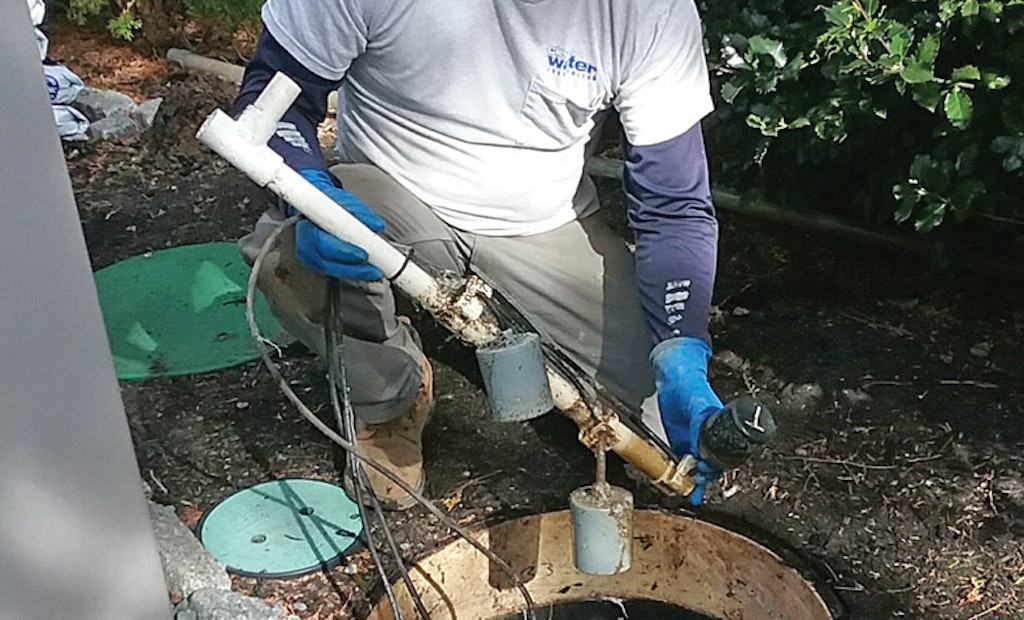Ponding septage from a failed cesspool — now on a neighbor’s property — caused homeowner Jim Noga to research wastewater treatment options 20 years ago. His single-family, two-bedroom home in Gloucester, Massachusetts, was less than 50 feet from the Atlantic Ocean, and the city was under a state consent decree to reduce nonpoint pollution to its coastal banks.
Noga selected a system from Waterloo Biofilter Systems and hired D.F. Clark in nearby Ipswich to design and install it. When company designer Charles Johnson visited the property, he found site constraints that didn’t meet 11 regulations. However, the biofilter’s ability to reduce organic loading convinced authorities to grant the necessary variances and approve Johnson’s design.
Clear Water Industries in Ispwich has maintained the 220 gpd system since it was installed in 1998. “The family has been very conscientious about following recommended best practices to maintain the system and are pleased with its long-term performance,” says Mark Cottrell, general manager for Clear Water Industries. “It’s been mostly trouble-free.”
Recap
The system has a 2,000-gallon dual-compartment concrete septic tank with 1/2 hp high-head turbine pump in a screened vault and a 1,500-gallon concrete tank containing a Waterloo Biofilter installed with a 1/3 hp pump (Grundfos Pumps). Effluent discharges to a 14-by-22-foot-long raised filter bed inside 3 1/2-foot-high concrete retaining walls.
The filter’s engineered open-celled synthetic foam 2- to 3-inch cubes are compacted in two 4 1/2-foot-high-by-4-foot-diameter baskets. A 3/8-inch threaded helical spray nozzle above each basket disperses the effluent in an umbrella-shaped pattern. During the 40 seconds the pump runs, each basket receives 6 gallons of effluent, then the system rests for 30 minutes.
“Each time the baskets are dosed, a drop of effluent seeping into one cube forces another drop onto the cube below it,” Cottrell says. “By the time a drop travels to the bottom of the basket, microbes have consumed almost all the organic nutrients.” A 5-inch fan constantly circulates air through the foam to ensure aerobic conditions.
When the pump in the biofilter’s dose tank activates, a tee recirculates half the effluent to the septic tank and half to the pipe-on-stone drainfield with three 1-inch perforated laterals on 5-foot centers.
Follow-up
The alarm on the control panel (Orenco Systems) has activated only twice: once for some float switches that failed after 16 years, and again when the original effluent pump burned out in 2007 and was replaced with a Barnes SE411 pump. “We also replaced the degraded pressure-treated wood covers on the biofilter,” Cottrell says. “A local carpenter built new ones from composite decking boards.” (The manufacturer has since changed the cover system.)
Initially, technicians drew effluent samples annually for pH, dissolved oxygen, and total suspended solids, and they inspected the pumps, spray nozzles, and floats quarterly. In 2009, Clear Water Industries petitioned the state Department of Environmental Protection to reduce inspections to twice a year with annual sampling. Thus far, Clear Water Industries has tested a total of 27 samples averaging 14 mg/L TSS and 22 mg/L BOD. For innovative alternative technologies, the state’s maximum effluent concentrations are 30 mg/L BOD and TSS.
“The foam cubes have been extremely robust,” Cottrell says. “We don’t see any degradation or clogging, and the biomat seems to be self-regulating. We have never pumped the biofilter.” Consequently, the drainfield remains in excellent condition.
The filter medium has a 20-year warranty, but Cottrell is anticipating a projected life span of 30 or 40 years. “Some of the Waterloo Biofilters we service, including this one, have operated for 20 years and the foam still looks like new,” he says. “Should it eventually clog or fail, we simply vacuum it out, fill the baskets with new media, and the system is up and running again.”










